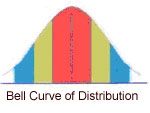Gender Differences
©Arlene R. Taylor PhD
I encourage people to learn all they can about brain function and to apply the knowledge they gain to their own lives on a daily basis. Because it is often easier to start from something than from nothing, I have prepared these summaries related to male-female differences.
My goal is to stimulate thinking and observation, trigger increased awareness at an individual level, jumpstart applications for every day living, and provide options for behaviors. Although I have relied heavily on brain function research, a plethora of studies, and discussions with brain researchers and other experts, the summaries represent my own brain’s opinion.
 Typically, conclusions from research studies are presented in the form of generalizations that apply to nearly 70% of the population (to the first standard deviation on either side of the mean). There are always exceptions based on individuality because the human brain develops uniquely. Consequently, no two brains are ever identical in structure, function, or perception—not even the brains of identical twins.
Typically, conclusions from research studies are presented in the form of generalizations that apply to nearly 70% of the population (to the first standard deviation on either side of the mean). There are always exceptions based on individuality because the human brain develops uniquely. Consequently, no two brains are ever identical in structure, function, or perception—not even the brains of identical twins.
For example, studies show that on the average, males have better visual-spatial ability, but some women are actually superior to the average male in visual-spatial ability. At times the variations within a gender may be greater than the differences between genders. The bottom line is that every brain develops uniquely.
If some of your personal characteristics don’t match a specific generalization, it doesn’t invalidate the research / studies. It does exemplify individuality. Avoid discounting first-impression mismatches too quickly. Perhaps you haven’t had the opportunity to hone a specific skill, or your personal past experiences have impacted you in unusual ways.
Strictly speaking, many use the word sex to refer to physical characteristics impacted by nature, and the word gender to refer to characteristics impacted by culture or nurture. Because of the close connection between nature and nurture and an inability to clearly distinguish between the impact of each in a person’s life and development after about the age of one year, I use these terms virtually synonymously.

